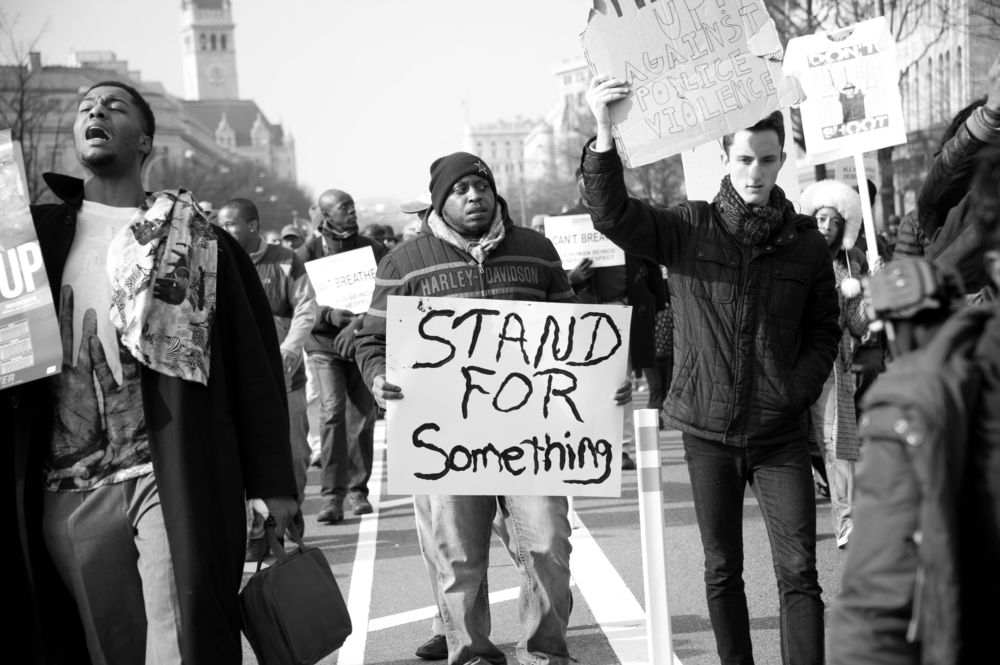Editor’s note: The opinions and conclusions that appear in this piece do not necessarily represent the position of Intel.
2020 has become a reckoning for American culture through the pandemic, the Black Lives Matter movement, the ominous storms in the east and the apocalyptic wildfires of the west. We are inherently linked through our biology, ecology, economy, the legacy of white supremacy and oppression. Now is the time to shake the foundation of how we operate as a society. Systemic racism infiltrates every aspect of who we are and how we interact with each other.
Sustainability centers around leaving the world a better place for the next generation. This implicitly covers all people with no qualifiers. However, sustainability practices have notoriously catered to the wants and needs of the wealthier majority, while excluding the most vulnerable communities by lack of engagement and practice. Sustainability must become synonymous with racial equity.
But how?
First, say the words. “Racial Justice.” “Racial Equity.” “Discrimination.” Get comfortable with being uncomfortable. Denounce white supremacy. And if you don’t think it exists, educate yourself. Noted author Beverly Daniel Tatum reminds us, “It is important to understand that the system of advantage is perpetuated when we do not acknowledge its existence.” A recent example from the New York Times includes a biracial couple living in an affluent neighborhood who received a substantially lower home appraisal — until they removed their family photos of the Black wife and white husband. On Oct. 7, the Chicago Times reported that a Black resident experienced a $60,000 difference in an appraisal because of her race. This discrimination extends to healthcare and environmental harm. A June medical study links air pollution and extreme heat from climate change to pregnancy risk that disproportionately affects Black women.
Now is the time for us to make equity the cornerstone of this vision for a greener, livable future.
Second, ask who is affected and what could go wrong? We need to dismantle the standard paradigm that designs sustainable products and services only for the top 1 percent. “Intent isn’t as important as impact,” explain diversity experts Project Inkblot. For example, designers made medical grade face masks for white men and many don’t fit women very well. The nursing profession is dominated by 91 percent women. The mask issue illustrates a clear design disconnect. Another example is a 2017 study by the NAACP and the Clean Air Task Force that showed that African-American citizens are 75 percent more likely to live in a “fence-line” community that borders a toxic industrial facility. Companies must consider these types of impacts moving forward and minimize harm to Black, Indigenous and people of color (BIPOC) communities. In fashion, which has dealt with criticism of horrible working conditions for decades, we need more brands that not only offer sustainably sourced apparel (from recycled material to fair labor), but also sell it at an affordable price point.
Third, act on the input from BIPOC communities. All aspects of sustainability including community development, building design and product engineering require user input. Urban planners need to have affected communities at the table, not simply to “approve” projects, but also to advocate for their needs. Manufacturers of green products must serve BIPOC communities and affirmatively reach out to ask how they can be better partners. It’s not enough to hear feedback; sustainability leaders need to act on the on BIPOC communities’ advice, needs and requests. And then they need to repeat steps 1 through 3 and keep learning. More voices in sustainability and more awareness on how to support racial equity will translate into better design, services and products. With this in mind, we can heed the words of Maya Angelou: “Do the best you can until you know better. Then when you know better, do better.”
Now is the time for us to make equity the cornerstone of this vision for a greener, livable future. The reason becomes crystal clear when one considers the peer reviewed literature on environmental threats. Communities where the majority of the population are Black, Indigenous and people of color suffer more environmental harm than white communities yet tend to be excluded from reforms. Yes, economics plays an important role, but race is a stronger factor. Similar to the impacts of COVID-19, pollution disproportionately affects BIPOC communities. This reality is why poll after poll shows that BIPOC communities care more about climate change and strongly support action.
Talking about racial equity in sustainability is easy, but implementing it requires more than a perspective change. Business leaders, elected officials and educators must commit to a different way of working. From selling green cosmetics in local drugstores to building energy efficient structures in BIPOC neighborhoods, we must intentionally advance racial equity. If we get it right, this new movement for equity in sustainability can snowball by not only providing a “cooling effect” for climate change but also resulting in thriving, healthy, equitable communities.

